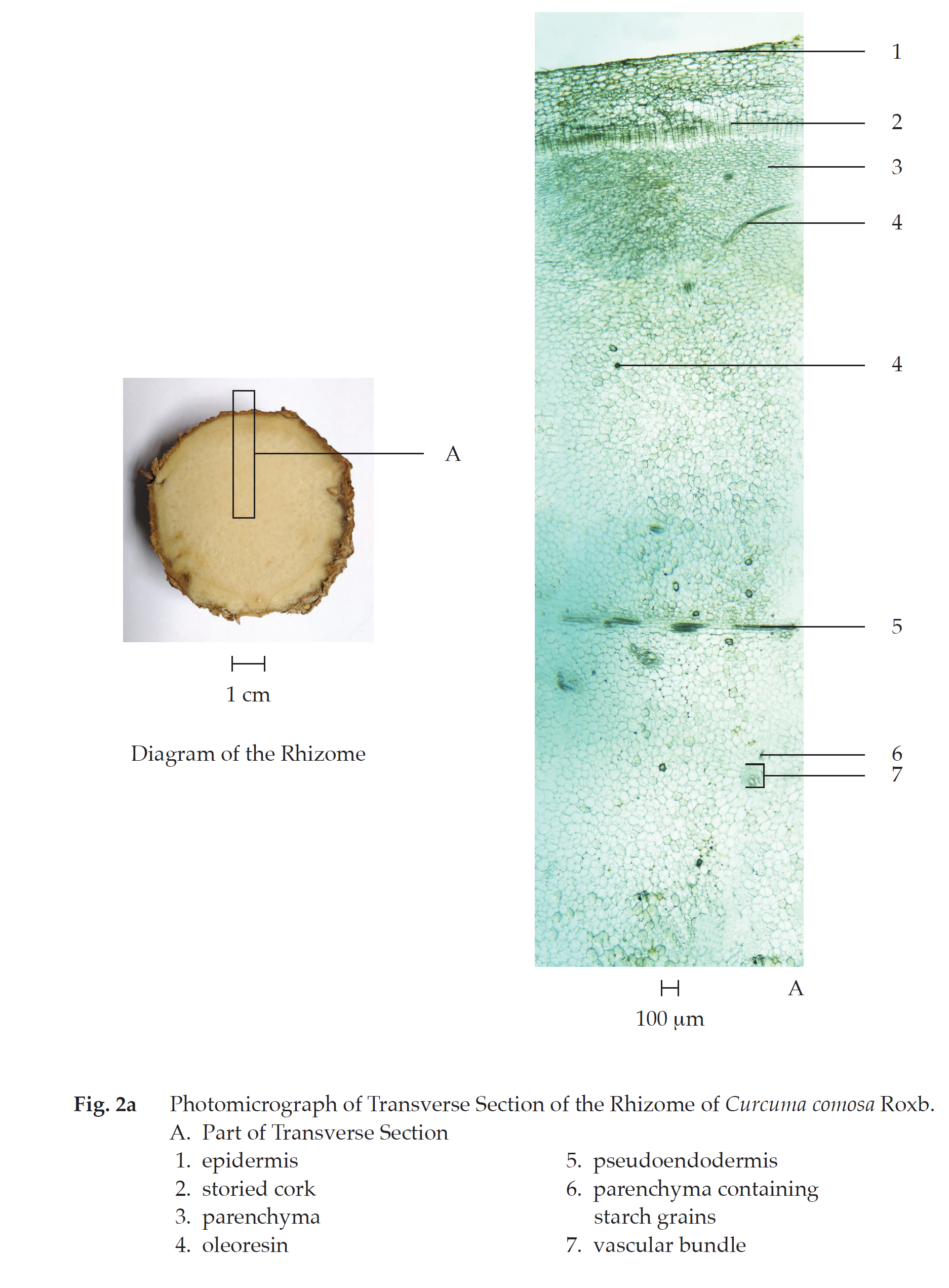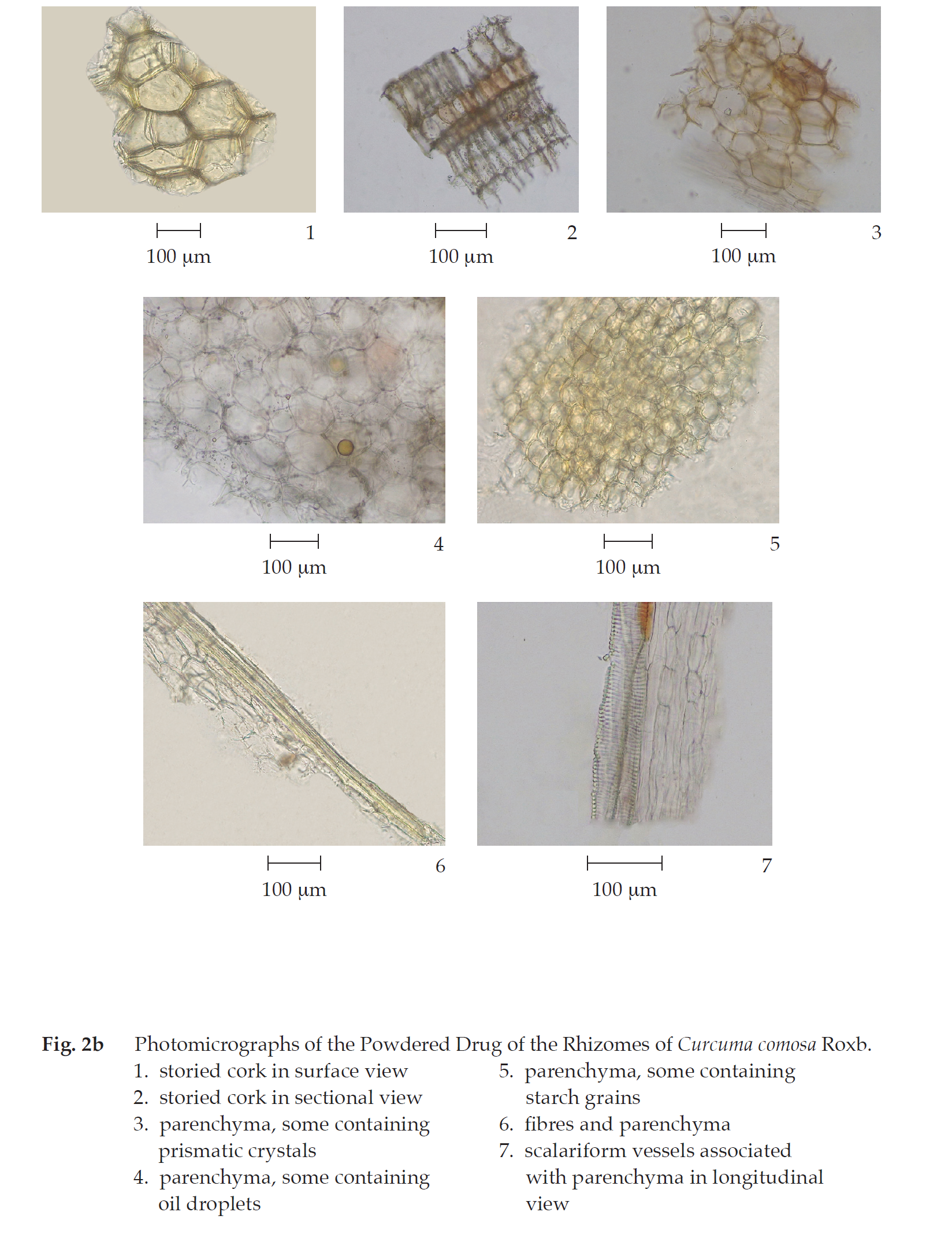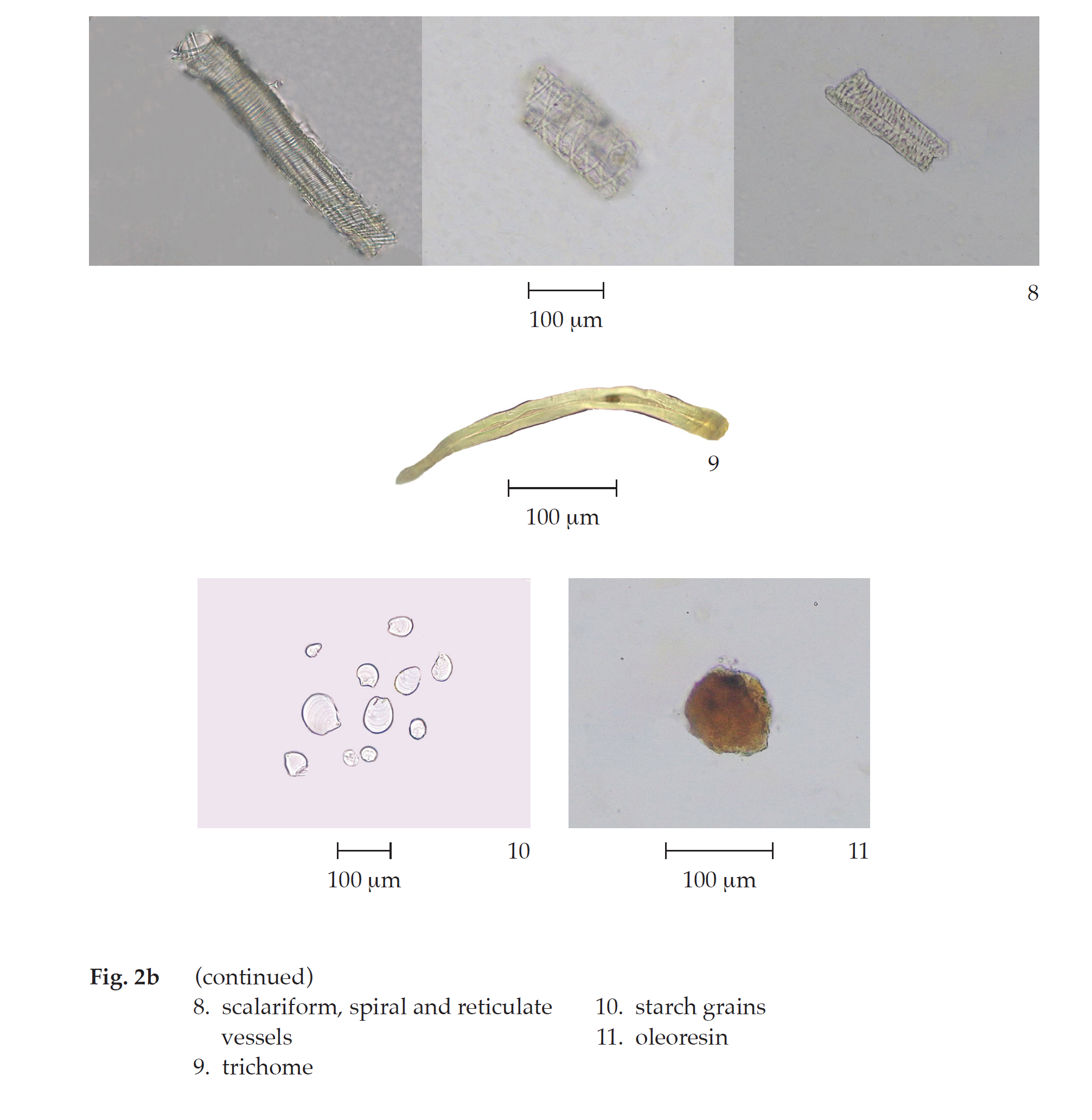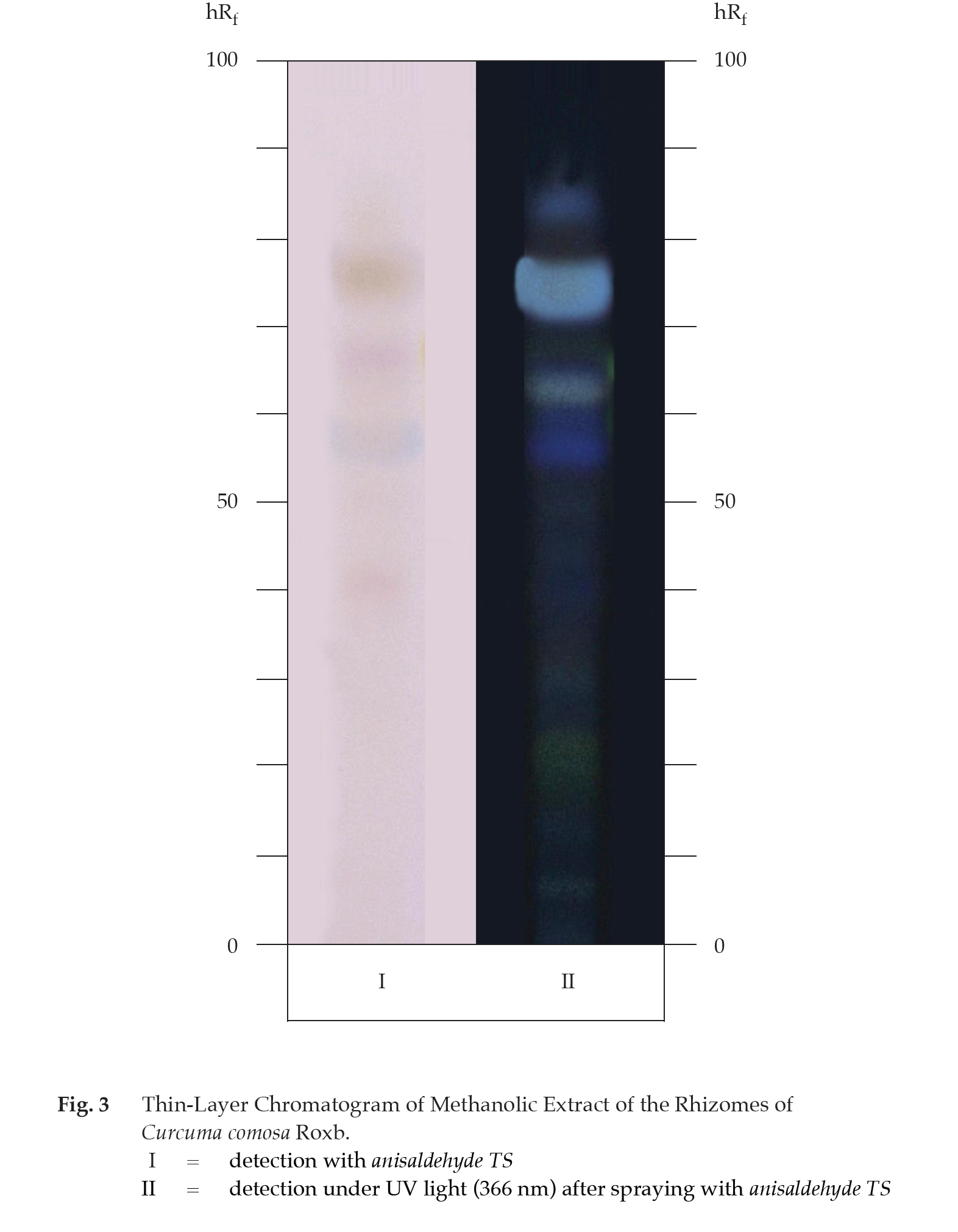ตำรามาตรฐานยาสมุนไพรไทย
Thai Herbal Pharmacopoeia
สำนักยาและวัตถุเสพติด กรมวิทยาศาสตร์การแพทย์ กระทรวงสาธารณสุข
Bureau of Drug and Narcotic, Department of Medical Sciences, Ministry of Public Health(Tinospora crispa (L.) Hook.f. & Thomson)
(Nelumbo nucifera Gaertn.)
(Centella asiatica (L.) Urb.)
(Centella Dry Extract)
(Centella Cream)
(Mesua ferrea L.)
(Piper sarmentosum Roxb.)
(Piper sarmentosum Roxb.)
(Pterocarpus santalinus L. f.)
(Santalum album L.)
(Senna tora (L.) Roxb.)
(Senna alata (L.) Roxb.)
(Senna Alata Tea)
(Piper retrofractum Vahl)
(Myristica fragrans Houtt)
(Andrographis paniculata (Burm. f.) Nees)
(Andrographis Capsules)
(Allium ascalonicum L.)
(Ocimum tenuiflorum L.)
(Curcuma longa L.)
(Turmeric Capsules)
(Turmeric Dry Extract)
(Turmeric Dry Extract Capsules)
(Arcangelisia flava (L.) Merr.)
(Curcuma sp.)
Harrisonia perforata (Blanco) Merr.
(Aristolochia pierrei Lecomte)
(Zingiber officinale Roscoe)
(Ginger Capsules)
(Ginger Tea)
(Cassia fistula L.)
(Nardostachys jatamansi (D. Don) DC.)
(Angelica sinensis (Oliv.) Diels)
Artemisia annua L.
(Ligusticum sinense Oliv. cv. Chuanxiong)
(Neopicrorhiza scrophulariiflora Pennell)
(Atractylodes lancea (Thunb.) DC.)
(Aucklandia lappa Decne)
(Terminalia chebula Retz.)
(Angelica dahurica (Hoffm.) Benth. & Hook. f. ex Franch. & Sav. var. dahurica)
(Kaempferia parviflora Wall. ex Baker)
(Hibiscus sabdariffa L.)
(Roselle Tea)
(Allium sativum L.)
(Zingiber zerumbet (L.) Sm.)
(Wurfbainia testacea (Ridl.) Škorničk.& A. D. Poulsen)
(Cannabis sativa L.)
(Myristica fragrans Houtt)
(Dracaena cochinchinensis (Lour.) S. C. Chen)
(Ficus racemosa L.)
(Hyptis suaveolens (L.) Poit.)
Clerodendrum indicum (L.) Kuntze
(Phyllanthus emblica L.)
(Citrus hystrix DC.)
(Citrus hystrix DC.)
(Areca catechu L.)
(Momordica charantia L.)
Moringa oleifera Lam.
(Aegle marmelos (L.) Corrêa)
(Solanum trilobatum L.)
(Morus alba L.)
Gynostemma pentaphyllum(Thunb.)
Makino
(Clinacanthus nutans (Burm. f.) Lindau)
(Cissus quadrangularis L.)
(Mimusops elengi L.)
(Zingiber montanum (J. König) Link. ex A. Dietr.)
(Piper betle L.)
(Capsicum annuum L.)
(Capsicum Oleoresin)
(Capsicum Gel)
(Piper nigrum L.)
(Piper nigrum L.)
(Eurycoma longifolia Jack)
(Thunbergia laurifolia Lindl.)
(Piper wallichii (Miq.) Hand.-Mazz.)
Senna garrettiana (Craib) H. S. Irwin & Barneby
(Terminalia bellirica (Gaertn.) Roxb.)
(Terminalia chebula Retz.)
(Caesalpinia bonduc (L.) H. Roxb.)
(Tarlmounia elliptica (DC.) H. Rob., S. C. Keeley, Skvaria & R. Chan)
(Hog Creeper Vine Dry Extract Capsiles)
(Hog Creeper Vine Dry Extract)
(Brachypterum scandens (Roxb.) Miq.)
(Lepidium sativum L.)
(Nigella sativa L.)
(Cuminum cyminum L.)
(Foeniculum vulgare Mill.)
(Plantago ovata Forssk.)
(Pimpinella anisum L.)
(Carum carvi L.)
(Anethum graveolens L.)
(Trachyspermum ammi (L.) Sprague)
Albizia procera (Roxb.) Benth.
(Acorus calamus L.)
(Tiliacora triandra (Colebr.) Diels)
Cyanthillium cinereum (L.) H. Rob.
(Orthosiphon aristatus (Blume) Miq.)
Murdannia loriformis (Hassk.) R. S. Rao & Kammathy
(Capparis micracantha DC.)
(Chrysopogon zizanioides (L.) Roberty)
(Cyperus rotundus L.)
(Cannabis sativa L.)
(Syzygium aromaticum (L.) Merr. & L. M. Perry)
(Boesenbergia rotunda (L.) Mansf.)
(Acanthus ebracteatus Vahl)
(Acanthus ilicifolius L.)
(Kaempferia galanga L.)
(Curcuma comosa Roxb.)
Betula alnoides Buch.-Ham. ex D. Don
Cannabis sativa L.
Carthamus tinctorius L
Mitragyna speciosa (Korth.) Havil
Mallotus repandus (Rottler) Müll. Arg
Azadirachta indica A. Juss. var. siamensis Valeton
Azadirachta indica A. Juss. var. siamensis Valeton
Punica granatum L.
Rhinacanthus nasutus (L.) Kurz
Baliospermum solanifolium (Burm.) Suresh
Curcuma aeruginosa Roxb
Boesenbergia kingii Mood & L. M. Prince
Senegalia rugata (Lam.) Britton & Rose
Acacia concinna (Willd.) DC.
Senegalia rugata (Lam.) Britton & Rose
Acacia concinna (Willd.) DC.
Senna alexandriana Mill. var. alexandriana
Cassia acutifolia Delile, Cassia angustifolia Vahl
Butea superba Roxb. ex Willd.
[Plaso superba (Roxb. ex Willd.) Kuntze, Rudolphia superba (Roxb. ex Willd.) Poir.
Pueraria candollei Graham
ex Benth. var. mirifica (Airy Shaw & Suvat.) Niyomdham
Streblus asper Lour.
Suregada multiflora (A. Juss.) Baill. (Gelonium
multiflorum A. Juss.
Curcuma Comosa Rhizome is the dried rhizome of Curcuma comosa Roxb. (Family Zingiberaceae), Herbarium Specimen Number: DMSc 5308, Crude Drug Number : DMSc 1205.
Constituents Curcuma Comosa Rhizome contains diarylheptanoids (e.g., (6E)-1,7-diphenylhept-6-en-3-ol, (4E,6E)-1,7-diphenylhepta-4,6-dien-3-ol). It also contains sterols, a volatile oil, etc.
Description of the plant (Fig. 1) Perennial herb, pseudostem 60 to 180 cm tall; rhizomepale brown to brown, ellipsoid or ovoid, 8 to 12 cm long, 5 to 10 cm in diameter, with rustyscales; tuberous roots ovate to lanceolate, 4 to 9.5 cm long, 1.5 to 3.5 cm wide. Leaves simple, alternate, tufted at base, oblong, elliptic to lanceolate-elliptic, 20 to 40(-110) cm long, 14 to 17(-24) cm wide, apex acute to acuminate, base obliquely cuneate to attenuate, margin entire, hyaline, glabrous, midrib sometimes red or reddish purple; petiole 5 to 14 cm long, glabrous. Inflorescence thyrsiform, arising from rhizome before leaves, 10 to 21 cm long, 7 to 10 cm in diameter; peduncle 8 to 11 cm long, glabrous; bract pinkish white or white, distal bract 6 to 7 cm long, 4 to 4.5 cm wide; fertile bract obovate, 2.2 to 4.2 cm long, 3.5 to 4.5 cm wide. Flower exserted from bracts; calyx tube about 8 mm long, 3-toothed, sparsely hairy at apex; corolla tube about 3 cm long, with a ring of densely hair; 3-lobed, dorsal lobe pinkish white to white, triangular, about 1.3 cm long, about 9 mm wide, apex mucronate, hooded, lateral lobe elliptic, about 1 cm long, about 7 mm wide, apex rounded; lateral staminode pale yellow, reddish tinge apically, unequally obovate, 1.3 to 1.5 cm long, about 1 cm wide; labellum pale yellow, with a bright yellow median band and paler lines radiating towards margin, blade broadly obovate, about 2.2 cm long, about 1.9 cm wide, apex bilobed, glabrous; stamen creamy white to pale yellow, about 8 mm long, filament 3 to 3.5 mm long, anther 4 to 5 mm long, spurs narrowly triangular, anther crest creamy white, obtuse; ovary inferior, pale cream to white, subglobose, about 3 mm in diameter, 3-loculed, pubescent, style glabrous, stigma capitate. Fruit a dehiscent capsule, ellipsoid, 3-valved.
Description Odour, characteristic; taste, bitter with astringent aftertaste.
Macroscopical (Fig. 1) Dried slices of rhizome, vary in shape, size and thickness; texture rough; externally brown; internally yellowish brown.
Microscopical (Figs. 2a, 2b) Transverse section of the rhizome shows epidermis, storeid cork, cortex, and vascular tissue. Epidermis: a layer of rectangular cells with unicellular trichomes. Storeid cork: several layers of rectangular cells. Cortex: thin-walled parenchyma containing numerous starch grains and/or oil droplets, some of which containing yellow oleoresin; pseudoendodermis, 2 or 3 layers of thin-walled rectangular cells. Vascular tissue: vascular bundles scattered in ground tissue, consisting of phloem and xylem.
Curcuma Comosa Rhizome in powder possesses the diagnostic microscopical characters of the unground drug. Parenchyma cells containing beaked starch grains, oleoresin and/or oil droplets, are frequently seen. Scalariform, spiral, and reticulate vessels are found.




Packaging and storage Curcuma Comosa Rhizome shall be kept in well-closed containers, protected from light, and stored in a cool and dry place.
Identification
A. Reflux 500 mg of the sample, in coarse powder, with 10 mL of ethanol for 10 minutes, allow to cool and filter. Evaporate 3 mL of the filtrate to dryness and dissolve in a few drops of acetic anhydride. Slowly add a few drops of sulfuric acid: a green to dark green colour develops at the zone of contact.
B. Carry out the test as described in the “Thin-Layer Chromatography” (Appendix 3.1), using silica gel F254 as the coating substance and a mixture of 93 volumes of dichloromethane, 7 volumes of methanol and 4 volumes of ethyl acetate as the mobile phase. Apply to the plate as a band of 10 mm, 15 μL of the test solution prepared by macerating 300 mg of the sample, in coarse powder, with 2 mL of methanol for 12 hours and filtering. After removal of the plate, allow it to dry in air and spray the plate with anisaldehyde TS and heat at 105º for 5 minutes; several bands of different colours are observed. Subsequently examine the plate under ultraviolet light (366 nm); one yellow and three blue fluorescent bands are observed (Fig. 3).
Loss on drying Not more than 11.0 per cent w/w after drying at 105º for 2 hours (Appendix 4.15).
Foreign matter Not more than 2.0 per cent w/w (Appendix 7.2).
Acid-insoluble ash Not more than 3.0 per cent w/w (Appendix 7.6).
Total ash Not more than 10.0 per cent w/w (Appendix 7.7).
Ethanol-soluble extractive Not less than 8.0 per cent w/w (Appendix 7.12).
Water-soluble extractive Not less than 14.0 per cent w/w (Appendix 7.12).
